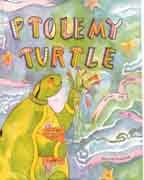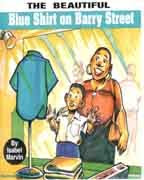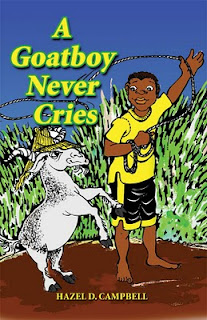

Mention children’s books and many people immediately think mostly of picture books – books with many brightly coloured illustrations, with rhymes, animals or weird characters - the books they enjoyed as young children.
As we know children go through different phases of development and the books produced for them reflect this.
So, there are books for babies and toddlers, books for children who are starting to read, and books for children who can read.Generally, children’s books are divided into picture books, picture story books, chapter books, easy readers, and novels spanning the age range 0 to 14 years. (Books for young adults take the age range to 16 years.)
What is a picture book?
A picture book is a book in which very colourful illustrations play the major role in telling the story. Picture books can be divided into categories such as:
Baby Books - for infants and young toddlers, these books can be lullabies, nursery rhymes, or even wordless books.
Toddler books - very simple stories for ages 1-3 - are about 300 words in length and tell stories familiar to a child's everyday life. They may be concept books which teach the child things like colours, numbers, shapes, the alphabet and so on.
Toddler Books are short, about 12 pages and can take many different shapes and formats. They tend to have sturdy covers and pages and can have a wide variety of ways of keeping the child entertained. They can have pop-up inserts, lift-up flaps, or make sounds when a button is pressed etc. Some of these books are more like toys taking the shapes of their subject matter like cars and fruits. The stories in these books are very simple and often use rhymes or very rhythmic prose.
Picture story books still depend on illustrations but are longer, about 1000-1500 words, for ages 4-8. Plots are simple, with one main character reflecting a child’s emotions and concerns. The illustrations are still a big part of the story telling. Picture books cover a wide range of topics and styles and can be either fiction or non-fiction.
Picture books with Caribbean content are in short supply. Our publishers have not shown much interest in this area of publishing, perhaps because of the costs involved. Full colour illustrations are expensive. Generally, illustrators in the Caribbean don’t accept royalty contracts, they must be paid up front and the cost of illustrating a book can be high. Also full colour printing is expensive, so publishers are understandably wary as their published costs cannot compete with the many (much)cheaper picture books from metropolitan countries, hence our bookstores carry mainly picture books from overseas publishers. Some overseas publishers put out picture books with Caribbean themes; and some Caribbean writers of picture books self publish, not expecting any great returns; but the challenges in this area mean that there are too few picture books with Caribbean themes for our young children.
Book covers from
http://www.jackmandora.com/
http://arawakpublications.com/inprint/component/virtuemart/?page=shop.browse&category_id=11&28e5bbf660cb545fc854f5c048c7be7c=43173612f669b1ac8e0ab8cafb813eba
http://arawakpublications.com/inprint/component/virtuemart/?page=shop.browse&category_id=11&28e5bbf660cb545fc854f5c048c7be7c=43173612f669b1ac8e0ab8cafb813eba




